How Fmcg and Fmcd products satisfy the consumer needs today
Key challenges for FMCG/FMCD towards consumers .
A brand can genuinely serve a great customer experience through a customer-led product. Implementation of a customer-led product approach allows a brand to offer a high-value customer experience with a growth strategy that makes customers a priority while designing the product.
Centralizing customer satisfaction can help you to improve product functionality and quality and innovate new products, increasing customer acquisition and retention rates. In return, it boosts the ROI of the company drastically and provides your customer with the best solution to their concerns.

Another pretty good example of a brand listening to the customer is Salesforce. It has built a platform named IdeaExchange that allows the customer to add suggestions regarding new features and ideas to help the Salesforce team to improve the platform.
Over and above that, if a consumer likes an existing idea on the platform, he can upvote it. The product manager adds the most upvoted idea at the top of a priority list. Then the product development team reviews and work on those ideas. In this way, eventually, brands get a loyal following by providing valuable customer service.
Additionally, not only does it help you in offering a better experience, but also to stay ahead of your competitors. The product team becomes conscious of all the latest trends and techniques used to acquire customers. The process of enhancing the product and CX strategy becomes quick and smooth.
The value (quality) that the consumer seeks from you, the price at which you sell, and the profitability which the shareholder is demanding from you, by virtue of having invested in your business.

What is FMCD and FMCG?
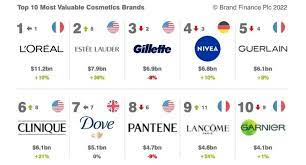
Guide to Consumer Behavior: How People are Making Purchase Decisions to satisfy their Needs, Wants, Or Desires.
Consumer behavior is a subjective concept, although there are many absolutes. Still, one thing is always true: many factors play a role in consumer decision-making. They include internal influences such as needs, motives, trends, personality, cognition, and Learning. External influences include cultures, subcultures, family structures, and groups that affect the individual. It is important to understand consumer behavior to learn about the internal and external influences that influence his behavior. Where these variables are complex and overlapping
Some of These Factors:
Learning.
Character.
Trends.
Society.
Reference Groups.
Situational factors.

What Consumer products do people need?
Body: Water and Food; Hygiene; Clothing; Activity; Medical/Health products (eyeglasses, walking aids, drugs for illness, moisturizer for skin, etc); Shelter
Mind: Stimulating reading/puzzles/games/activities/courses; Place for social interaction;
Current life: Computer; Digital tools; Auto/Transit; Identification cards
Extras: “Products” for interests: musical instrument, computer programs, educational materials, tools, fashion/makeup, entertainment devices,
FMCG – Fast moving consumer goods are those goods whose demand and consumption is more frequent. For example Soaps, Hair-oil, Food and Beverages etc.

What are four reasons why human wants are not easily satisfied with consumer products?
Because we always need a motivating vision that makes us a better person. As long as you are alive, you should not stop striving – not to reach an end, but remembering to enjoy the process of growth.
Instead of appreciating daily miracles of ingenuity, we instead call it a disaster when something ceases to function. Everything going along comfortably becomes invisible and a norm. We unfortunately tend to engage in selective ‘mental filtering’ that emphasises the negative.
We have high standards. The artist for example can only produce extraordinary art if they have high standards – of discipline, technique, quality of materials, intention…
We are addicted to novelty. Like water, our experience is best when flowing. When it stagnates, it becomes toxic and settles at the lowest point. We always need to have new experiences to refresh ourselves.

Does a higher customer satisfaction influence sales?
It absolutely does.
It’s 6 to 7 times easier to sell to existing customers than it is to new prospects.
Would you want to sell to unhappy customers though?
I doubt it.
The scheme is rather simple: happier customers means more upsell and thus more revenues.

FMCD – There is nothing like Fast moving consumer durables. The concept is misguiding. Items such as washing machines, AC, Smartphones etc. are Consumer Durables (CD) only. They are not fast moving because customer does not have demand for these products even couple of years after the purchase.

Why is unboxing Apple products satisfying?
Thr answer to your question lies in the past of Apple products . Right from the first Macintosh, Apple focused heavily on how the product will be received and touched by the consumer . They made sure that the consumer felt like he is buying an expensive yacht.
Their packaging has been a key highlight when it comes to building a brand . They invest a lot of money in order to make you feel special and cared for .
Now , coming to the technical aspects . The trick lies in the the slow slipping of its box . When it slides so slowly it builds up your curiosity and your eyes lit up when the phone is revealed to you even if you have seen it a 100 times.
Another point of satisfaction is the sound of removing the protective film . For tech junkies and Apple fan boys , it is true heaven .
What is the impact of product strategy on customer satisfaction?
Product is the only link between your brand and customers. So, implementing the right product strategies is utterly crucial for customer satisfaction. It is necessary for marketers to see the product through the lens of customers. Brands that tailor product strategies in such a way that keep customer wants and needs first can acquire and retain consumers at a higher rate.
Here are 4 reasons why customer-led product strategies are important –

Delivers Greater Value to Customers
There is no point in purchasing a product that does not get the consumer out of the issue they face. Every strategy should be given priority in accordance with the demands of the consumer to ensure great interactions everywhere your brand interacts with them. Organizations must be flexible and clearly tied to a goal that gives teams autonomy since these demands are always changing.
Consumers are willing to pay if only they obtain a solution from your product. Customer-led product strategies enable companies to see their product through the lens of their customers.

Faster and better solution
We all know that in this digital world, the market changes very frequently and in a short period of time. Every passing day requirements of consumers vary, and organizations need to alter their products accordingly.
Making changes and adding/removing features is not easy. In addition, not following customer-led product strategies might become a big headache for your whole company. How? Not pursuing those strategies will require a chain of experiments to pinpoint what’s working for your organization.
With customer-led product strategies, the product team can quickly make decisions and start working on product growth. The extensive flexibility and responsiveness as a consequence of this method entitle companies to deliver a faster and better solution to the target customer.

Ensures Customer Retention and Profitability
Every day a new product launches with almost similar features claiming to offer the best-in-market solution for consumers. Amidst a huge number of products in the market, customer retention has become a matter of utmost significance.
Secondarily, the profitability of a company comes with its customers. The customer-led product system is dynamic enough to assist you in spiking sales and getting desired financial outcome as you can make modifications based on customer reviews.
Happy consumers increase the customer retention rate and profitability altogether. Establishing your daily operations by acknowledging customer experience ensures their contentment with the product. Ultimately, buyers tend to stick with your product for a remarkably long period of time.

Encourages Positive Word Of Mouth Through All Channels
If decision-making authorities steadily centralize their focus on fulfilling customer wants, the brand starts getting recognition for its customer-centric nature. Customer-led product strategies increase the likeliness of customers talking more and more about your brand.
Moreover, in this tech-savvy world, online platforms have allowed consumers to share their experience with a product effortlessly. There are enormous channels for potential buyers to get product reviews and make purchase decisions.
Customer-led product model provides preference to the customers at every turn, reducing the chances of getting negative reviews and feedback. Thus, it increases ROI through favorable responses from customers.

How Customer-Led Product Strategies Offer High-Valued Customer Experience?
Customer-led product strategies keep both customer journey and product journey aligned. It transforms the organization’s workings in such a way that every aspect considers the customer’s desires when planning, developing, or modifying procedures for the product start.
For example, Tesla CEO Elon Musk valued customer feedback by implementing a suggestion from a Twitter user. A customer requested to adjust the steering wheel when the car parks. Musk responded to the user and promised to add that feature to all Tesla cars in the upcoming software releases.
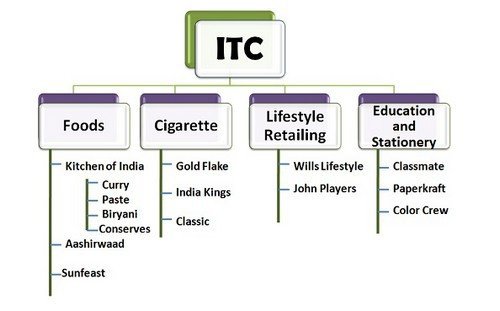
In India, why is flanking a good marketing strategy for FMCG (fast moving consumer goods) products?
Some of the major strategies adopted by FMCG companies for making their brands outstanding compared to competitions are as follows:
(i) Multi-brand Strategy (ii) Product Flanking (iii) Brand Extensions (iv) Building Product Lines (v) New Product Development (vi) Product Life Cycle Strategy (vii) Taking advantages of wide distribution network.
The success of an FMCG depends greatly on its marketing strategy. An FMCG marketer pursues a wide combination of strategies.For instance, when prices are competitive, the company would use an extensive distribution network, design suitable advertising and sales promotion schemes from time to time.

(i) Product Flanking:
Product flanking refers to the introduction of different combinations of products at different prices, to cover as many market segments as possible. It is basically offering the same product in different sizes and price combinations to tap diverse market opportunities. Shampoos in small sachets, Pan masala in small pouches and premium detergents (Tide, Aeriel etc.) in small pouches are examples of this strategy.
Flanking marketing allows one company to displace a competitor in a peripheral market. Those companies that engage such strategies aim to capture a market segment that is not well served by the existing competition.
As the flanking company moves in, other competitors must re-allocate their own resources to keep that targeted market, or end up ceding those customers to the flanking company.
Flanking strategies work both ways. A dominant company may defend against potential flank attacks by creating its own flanker brand—a brand to occupy the flank position on a core product. For example, to entice a new market segment, the makers of Tide laundry detergent launched its Cheer brand as a lower-cost alternative to Tide. While sales of Tide fell a little, the combined sales of Tide and Cheer were greater than Tide’s sales before the launch. Sitting on Tide’s low-price flank, any flanking attack made by a future competitor will threaten Cheer before it can threaten Tide, the core product.

The FMCG value-creation model
This success owed much to a widely used five-part model for creating value. Pioneered just after World War II, the model has seen little change since then. FMCG companies did the following:
Perfected mass-market brand building and product innovation. This capability achieved reliable growth and gross margins that are typically 25 percent above nonbranded players.
What major activities are done by enterprises to ensure customer satisfaction?
Customer satisfaction is a measure of how well a company meets or exceeds the expectations of its customers. For enterprises, this means providing high-quality products and services that meet or exceed customer needs and expectations. Customer satisfaction is a perception of customers regarding the quality of products, services, and performance of an organization. It is a measure of how well a company meets the needs of its customers. It is important to understand what customer satisfaction means to your business and how you can improve it.

Why do enterprises care about customer satisfaction?
Today’s consumers are more informed and connected than ever before. As a result, they have higher expectations regarding what they can expect from their interactions with businesses. If an enterprise fails to meet these expectations—even once—it risks losing customers who may never return. In addition, good customer service can help build brand loyalty among existing customers, who will be more likely to recommend your company to others.
For enterprises, customer satisfaction has become more important than ever before as they strive to provide better products and services to customers. They want their clients to feel valued, respected, and appreciated. This is one of the reasons why effective product owners and entrepreneurs use form builders such as 123FormBuilder to get feedback from customers on their customer experience and service quality – data that’s key to measuring and improving customer satisfaction.

How do enterprises track and measure customer satisfaction?
Achieving customer satisfaction means that businesses have to make sure that their products or services are based on what their customers need. They also have to make sure that customers are given the best possible service so that they will keep coming back for more.
Customer satisfaction can be measured in several ways. As mentioned before, enterprises can use surveys to determine how satisfied their customers are with their products and services. Surveys may also be used to evaluate employee performance, as well as the quality of a company’s products or services. These types of surveys are often done anonymously so that customers do not feel pressured into giving positive feedback about their experience with a company or product.
There are four major activities that companies perform to ensure customer satisfaction:
Customer Service – Companies must have excellent customer service representatives who can answer questions about products and services, as well as resolve complaints promptly. This ensures that customers feel empowered when they have questions or concerns about any aspect of their experience with the company’s offerings.

Surveys – Satisfaction surveys, Customer loyalty surveys, Net Promoter Score surveys, etc. allow companies to evaluate how well they’re meeting their customer’s needs and expectations through questionnaires.
Customer loyalty programs – Loyalty programs are another way that enterprises can ensure customer satisfaction because they help keep customers coming back again and again! Loyalty programs can be as simple as offering discounts on products or services; or as complex as an entire rewards program where points are accumulated throughout the year and then redeemed at certain times during the year (like Black Friday).
Hiring – Enterprises hire employees who have excellent communication skills so that they can effectively interact with customers.

Product Quality – Businesses offer high-quality products at affordable prices so that more people will be able to afford them.
Built relationships with grocers and other mass retailers that provide advantaged access to consumers. By partnering on innovation and in-store execution and tightly aligning their supply chains, FMCG companies secured broad distribution as their partners grew. Small competitors lacked such access.
Entered developing markets early and actively cultivated their categories as consumers became wealthier. This proved a tremendous source of growth—generating 75 percent of revenue growth in the sector over the past decade.

Designed their operating models for consistent execution and cost reduction. Most have increased centralization in order to continue pushing costs down. This synergy-based model has kept general and administrative expenses at 4 to 6 percent of revenue.
Used M&A to consolidate markets and create a basis for organic growth post acquisition. After updating their portfolios with new brands and categories, these companies applied their superior distribution and business practices to grow those brands and categories.

How to Enhance Products for Better Customer Experience?
If you bring changes to your product without considering what your customers say they want, you are inevitably throwing darts in the dark. Your product is not what you think your customer needs. So, figuring out the right way to improve your product to satisfy your customers is vital.
Here are the three most effective ways to enhance products for a better customer experience.
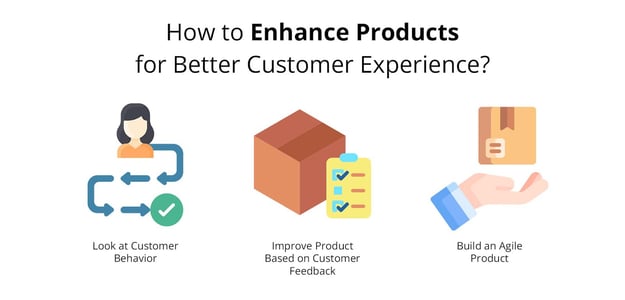
Look at Customer Behavior
We know consumers’ necessities keep fluctuating, so tracking their behavior through varying pain points and goals becomes a more straightforward task to perform. Use RFM Analysis or Customer Lifetime Value to figure out the same.
Salesforce made 15,600 customers a part of its consumer survey and found that 66% of them want companies to understand their needs and expectations. The customers in this survey consisted of consumers and business buyers at the global level.
Improve Product Based on Customer Feedback
Your customers provide ample feedback through a variety of online channels.
They leave multiple hints and signals indicating what’s missing or what they would love to see in your product. You only need to listen to them carefully.
You can refine your product enhancement strategies by examining several customer opinions and unifying the outcome of your research. A customer experience analytics platform aids you in the profound scrutinizing of consumer insight reports generated from online customer reviews and feedback.

Build an Agile Product
Brands need to follow an agile approach to become more efficient in making effortless changes to the product. Even it promotes transparency in the product development cycle, allowing the team members to work with clarity.
Since the agile method focuses more on execution, the product team can cut down on turnaround time and speed up the substantial transformation processes. Providing customers with swift solutions can give you competitive advantages.

Leverage Customer Insights to Build a Great Product
Partner with retailers to get the analytics on interactions with your products from the consumer standpoint. That will give you more insight on how consumers feel about your product, demographics on who is buying it, and gives you the opportunity to target the customer experience to dial in on that feedback.
Indeed, customer insights are valuable for optimizing a customer’s journey with your product. But, the primary question is, how can you leverage those insights and operate to build a great product?
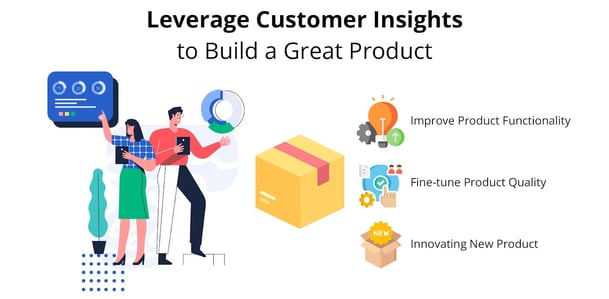
Improve Product Functionality
Often, a few errors creep in to ruin the customer experience. It is ordinary to encounter such inaccuracies from time to time. The subsequent agenda should be to repair the functionality of that feature as soon as possible.
But for that, you need to comprehend why and where the customer is struggling while using your product. Understanding customers through data accommodates brand solutions and allows the company to maintain the relevance of the product.

Fine-tune Product Quality
Buyers never hesitate to convey their thoughts, especially when they have purchased a product from their hard-earned money. Customer insight reports aggregate your customers’ feelings and let you know what’s wrong with your product.
By employing customer insight, you can look into flaws in your product and make appropriate fixes to build a quality product. Certainly, offering quality products attract customers due to its unrivaled benefits.

Innovate New Product
Before proceeding with big decisions like developing or investing in a new product, leaders should look into noteworthy pain points of their consumers through customer insights. Look for the missing part, what solutions most buyers are asking for, and what your company does not offer. A lot of them will offer crucial insights into where your product fell short or how you may make improvements to your product.
Direct sales to multiple small business outlets
3rd party online or retail sales agreements, where your products or services enhance the 3rd party’s products or services
Producing for 3rd party “own label” brands
Progressive international sales roll-out, with initial countries prioritised for ease of sales and high EBIT impact
Supply Chain Design and Supplier Performance Management

The value of spend you have with your suppliers is often more than 50% of your total unit cost. You must allocate sufficient time to manage this spend for quality, unit cost reduction, lead-time reduction and on-time delivery. Too many start-up business owners underestimate the risks and opportunities of their suppliers. It’s important to have great contracts with suppliers that minimise risks, such as business continuity problems and also maximise opportunities, such as discounts for volume increases.
Most supplier problems are predictable and simple early warning systems should be established to ensure suppliers stay on track. We recommend frequent “Go & See” visits to key suppliers. Even the most capable retailers have been caught out by failure to personally observe poor supplier practices. A notable recent example was a supplier who decided to increase their profitability by supplying horse meat instead of beef in their burgers. Reputation damage to the retailer was huge and long-lasting.

What is the significance of customer satisfaction to a business?
Did you know 80 percent of companies believe they offer superior customer satisfaction, but only 8 percent of customers would rate the customer service they receive as superior?
Most companies aren’t providing the level of customer satisfaction their clients want. Even worse, most aren’t aware of it!
So, how do you know you’re offering the type of service your customers expect?
The first step is to determine what metrics matter and how you’re going to accurately track them.
Brush up on the types of customer satisfaction metrics and learn how your business can improve your customer service, build relationships, and decrease churn rate.

How To Define Customer Satisfaction?
Before you can get into customer satisfaction metrics, you must define exactly what you mean by customer satisfaction.
Without any context, the numbers lose their meaning.

So what are customer satisfaction metrics, and how do they differ from other data points your company may be measuring?
At its simplest, customer satisfaction metrics refer to how happy customers are with the service they receive. Since happiness is subjective, customer satisfaction is connected to the individual’s customer experience (CX).
So we can’t talk about customer satisfaction without examining the customer experience.
Customer experience is the sum of your customer’s experience with your brand across all touchpoint on the customer journey, from initial discovery through conversion.
CX reflects the way your company makes customers feel during interactions, as well as the way they feel when they use your products or explore your services.
While every customer’s journey is different, a representative customer journey might include:
Interactions with your company’s chatbot

Visits to your company’s website
An exchange of tweets using your brand’s hashtag
Calls to a customer service line
Email support after purchasing a product
Today, customer experience is omnichannel.
What are the best ways to maintain customers?
What are the best customer feedback tools for product development?
So you want customer feedback to improve your product?
Face to Face Meetings. As Steve Blank would say the best way to get customer feedback is to “Get out of the Building”. This is critical for early stage companies but also important for large companies.
Video Chat. If you can’t meet face to face, try to set up a video call. Facial expression and body language speak volumes about what a customer is truly feeling. You can’t get that from the rest of this list.

Your Phone. Outbound calls to customers of course, but don’t be afraid to publish your personal number prominently on you website so you can talk to customers. Visit http://www.blank.com, call the number on the header and you will likely get the founder. Is it scalable for a large business? Of course not. This is the internet version of Mr Bkank making personal visits to his stores.
Google Voice. Afraid to put your cell phone on your website? I don’t blame you, instead use google voice. As a special bonus, incoming calls can be recorded by pressing “4” so you can share the conversation with other people in your company.
Live Chat. Customers may be more willing to chat with you than commit to a phone call. It’s the next best real-time way to interact.
Email. It isn’t real time so to speak but email isn’t all bad. In fact for some types of feedback (like customer service) it works great.
Online Survey Tools. http://survey.com
Online Customer Service Tools.
It is one thing to get a good flow of customers headed towards your business, but one of the keys to a successful business is loyal customers. Therefore, trying to maintain the customers that bought from you before may be hard in some cases. Here are some ways to keep your customers around:
Reward your customers: Who does not like gifts? They are pleasant, and best of all they are free! It is a great thing to offer your customers something that will show them that you appreciate their business. It is one of the quickest ways to have them come back and buy more of your product. They will always remember the one time you gave them a gift.
Send thank-you notes: Sending a pleasant thank you note, letter or email can go a long way. It shows that your customer is not just a number. It also kind of gives them that one on one interaction with your company, and that can build loyalty. It lets them know that you appreciate their business, and your business isn’t just there to take their money.
Do what you say you are going to do: One thing that costumers hate is when businesses/companies lie about what they say they are going to do. As a business owner never make any promises that you cannot keep. If you make a promise to a customer that was not kept you can say goodbye to them right away. Staying true to your customers is very important, if you cannot do this, they will take their business elsewhere.
Be accessible: Try your best to always be available for your customers’ needs. Customers love it when they can get support/help as soon as possible. Try your best to respond to phone calls and emails as fast as you can and try to let them know that their problems are your problems. They must know that you are willing to help them whenever there is a problem.

Appearance matters: Make sure your business/company looks as professional and as pleasing as possible. We do judge a book by its cover, and if your business is pleasing to the eye it will attract people. For example, everybody loves fancy restaurants because of how they present themselves. They are usually very pleasant, and people put these restaurants on a pedestal.
You always want to keep your customers as soon as they purchase anything from you. The best way to do this is to make sure that they never forget you! Always be assessable to them, thank them, reward them, and look your best.
FMCG companies across the globe enjoy the benefits of having a huge market potential because of the size of the population of a country and is characterized by a well-established distribution network between the organized and unorganized sectors. Every manufacturing company looks for multiple ways to optimize costs, penetrate new markets and increase revenue since it works on the low margin & high volume model. With such a high volume of production and wide spread out of channel partners, it becomes difficult for manufacturers to manage the entire distribution network through manual ways of working.
The manual process works in the following way:
Company’s dedicated executive will coordinate with Regional Distributors (RD) to track sales and inventory on daily basis usually over a call or mail.
RDs will provide the information according to their availability and convenience.
Company’s executive then manually enters the data into the system and then forwards to the management for evaluation & business decisions.
The said process is a lengthy one for covering a wide network of RDs and leads to a lot of wastage of time, cost and resources.
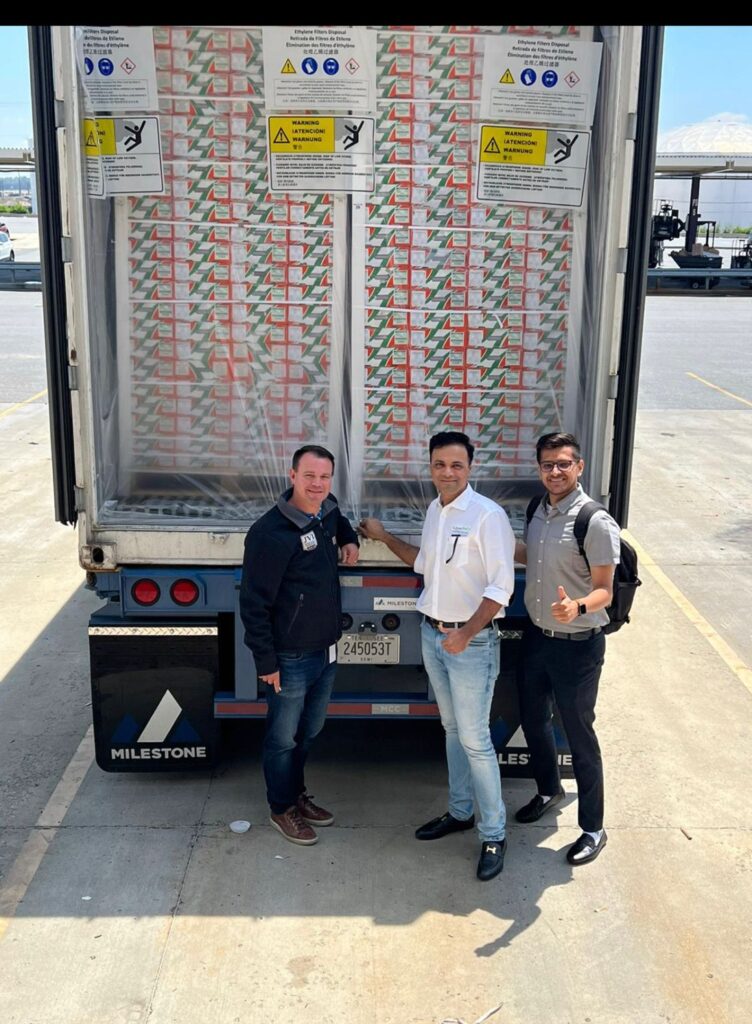
Fmcg Company Short Term Benefits:-
Product Linking & SKU Mapping: There’s a possibility of the difference between the item code at manufacturer and distributors end. A DMS should give the power to the manufacturer to automatically identify the difference, align it with distributors data and map the SKU accordingly.
Complete Control over Distributors Activities: A good DMS system will give you a complete control over distributor’s MRP, item alteration, ledger alteration, back date entries, negative stocks, reorder levels etc.
Stock Management: An ideal DMS should help manufacturers avoid out of stock situations so that no business is missed out on. It gives them the ability to track movement of stock from distributors end, visibility of damaged & undamaged stock and maintain minimum amount of stock across multiple distributors.
Sales Force Automation: Every company is on the look out for a sales force automation software. Therefore, a good DMS software should provide integrated sales force automation to validate sales executive visit, track tertiary sales, monitor brand visibility, evaluate market competition etc.
Fmcg Company Long Term benefits:-
Targets & Achievement Measurement:You can plan better sales strategy and get more accurate projections by visualizing targets vs achievements using a Distribution Management System.
Increased Productivity: By automating the various channel processes such as order processing or real time communication of distributors sales, organizations can save a lot of time which can be further utilized for more productive tasks rather than wasting on coordination and follow ups.
Channel Management: Track individual channel partners performance through tracking their sales data. Thus, empowering organizations to take effective decisions and offer price discounts to specific distributors to boost sales.
Ecology of Happy Distributors: Tracking secondary sales accurately would help you enable seamless distributor claim and scheme settlement. It will also enable manufacturers to achieve faster stock replenishment thus, creating an ecology of happier distributors.
There are huge benefits that a FMCG/FMCD company can secure by using a Distribution Management Software. Making sure that right DMS is deployed is a critical factor for ensuring maximum benefits out of one and staying ahead of the game. EAZY-DMS is a first of its kind software that can help you achieve all of the above by tracking secondary sales data and streamlining key factors of your channel sales from faster stock replenishment, reduction in inventory carrying costs to better production planning and achieve greater channel visibility without the hassle of changing systems at the distributor’s end.
When will a Fmcg Consumer become completely satisfied?
A human can be ‘fully’ satisfied –
If He learns to wake up each day with a beaming smile, saying “I’ll make this my best day!” Splendid!
If He sets his daily goal to bring about atleast 5 smiles around him.
If He begins to show gratitude for even the tiniest things that people do for him.
If he begins to show his loved ones how much he loves them.
If he visits the government hospital atleast once a month, orphanage atleast once a week, and old-age homes atleast once a year. You-know-why!
If he crushes the word *expectations* in his head.
If he learns to be surprised at the awesomeness of our nature. Just look at the clouds, and the mountains and go feel the breeze!

If he succeeds in defeating his Everest-sized ego.
If he learns to stick to his own plans without giving up.
If he knows for himself what’s important and what can be forgotten. Priorities!
If he accepts that nobody is perfect.
If he looks at long-term goals early in life.
Finally, if he crashes on his bed saying,“That was one hell of a day! Can’t wait for tomorrow!

Wait. The list didn’t end there..
And then looking through it dawned that the trick is all in your head.
Your brain is a genius.
If you want to be happy, you become happy.
If you want to compliment and encourage others, you will.

If you choose to be sad, you fall hard.
You be you. The choice is yours.
Choose happiness and contentment.
That’s how to remain happy and satisfied throughout.
That’s how a human becomes fully satisfied as well. By choosing to be.
When he makes wise choices, he becomes the master of his life.
We are lucky to be living today. Let’s say this tomorrow too, and every other day until forever.

Top most festival Products FMCG consumers search today
World Wide Festive Trends Decoded What Indian festive consumers seek...
Read MoreHow right selection of FMCG Salesmen improves brand market share
How can FMCG Companies improve salesman’s technique in order to...
Read MoreHow most searched Fmcg sales and marketing words help newbie salesman
Why undestand FMCG sales management? Sales management is the process...
Read MoreHow Successful FMCG Salesman Starts his Day, a guide
How does one become a good sales executive in the...
Read More



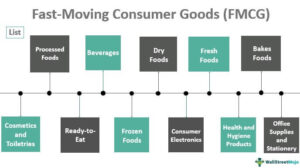


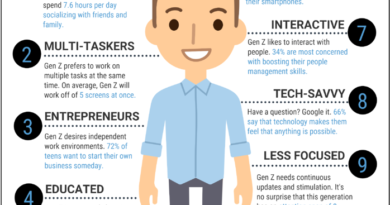

Pingback: How does a laid-off FMCG salesperson deal with rejection?
Pingback: An FMCG Salesman's achievement is Building Top Notch Brands.